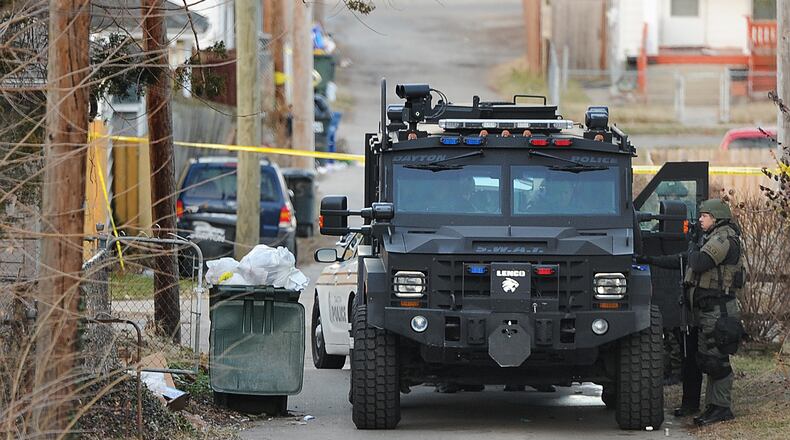Only five of the 142 Dayton police reform recommendations have been completed, but police officials say work on many others is underway and some should be finished soon.
“Most things are in progress, and a few are completed,” said police Major Paul Saunders, chief of staff with the police department.
After more than eight months of work, the five police reform working groups met for the last time earlier this spring.
However, a few members of each working group are now serving on a new implementation committee, which met for the first time this week.
Over the next six months, the implementation committee will meet monthly to monitor, evaluate and provide feedback about how the city and police department are enacting the recommendations put forward by the reform working groups.
The group also will help develop an “accountability structure” to oversee policing reforms in the long-term.
During the committee’s first meeting, Major Saunders gave an update about what the police department has done and plans to do when it comes to the proposed reforms.
About 26 of the recommendations are in progress, while eight are in a “holding pattern,” which means they are expected or scheduled to happen soon, like de-escalation training that will take place as soon as the instructor and police personnel are available, Saunders said.
About 47 recommendations have not been started, Saunders said, while 29 involve other city departments, which make them more complex and not entirely in the police department’s control.
Credit:
Credit:
The police department has completed a few recommendations to add language into police policies about officers’ duty to intervene and provide medical attention in use of force incidents.
A recommendation to strengthen a policy prohibiting chokeholds is considered in progress, even though it was immediately implemented through an executive order last year, Saunders said.
“Eventually it will be in policy,” he said.
The police department also completed another recommendation by offering police complaint forms in multiple formats, including hard copies and electronically.
Saunders said some recommendations are very close to completion, like the very first one submitted asking the police department to equip officers with body-worn cameras.
Saunders said the police department has acquired cameras and trained officers on their use and operation.
He said the department has drafted a policy for the technology, but it still needs final approval.
Police officials have created a new tracking system that categorizes reform group recommendations as low, medium and high complexity.
Low complexity recommendations may be achieved by taking actions as simple as adding, revising or adopting new language to police department policies.
High complexity proposals may involve multiple departments, new funding or charter changes, which requires voter approval at the ballot box.
About 42 recommendations are high complexity, 32 are low and others are considered medium level, officials said.
Dayton City Manager Shelley Dickstein during the meeting said the police reform process has involved thoughtful, authentic and engaging discussions that led to strong recommendations for better policing practices and policies.
“I am really excited about this opportunity to implement all of the great recommendations,” she said.
About the Author




